Outforia Quicktake: Key Takeaways
- Paracord is a robust, nylon rope that consists of a multi-stranded core encased in a woven nylon outer sheath, making it sturdy and durable. Originally developed for parachutes in World War II, it has diversified uses in outdoor activities, camping, and sports.
- “550 paracord,” the most common type, indicates that the paracord has a tensile strength of 550 lbs (249 kg), with a core of 7 strands and an outer sheath of 32 strands. It has a diameter of 4mm.
- Typically crafted from nylon, paracord can also be made from polyester. Each material has its pros and cons, depending on the use case.
- Several different grades of paracord exist, each suitable for various applications. These include creating a fishing line, crafting survival bracelets, supporting tents or shelters, sewing thread, and more.
- Paracord can be manipulated using various knots to create different styles for items like bracelets, belts, or necklaces.
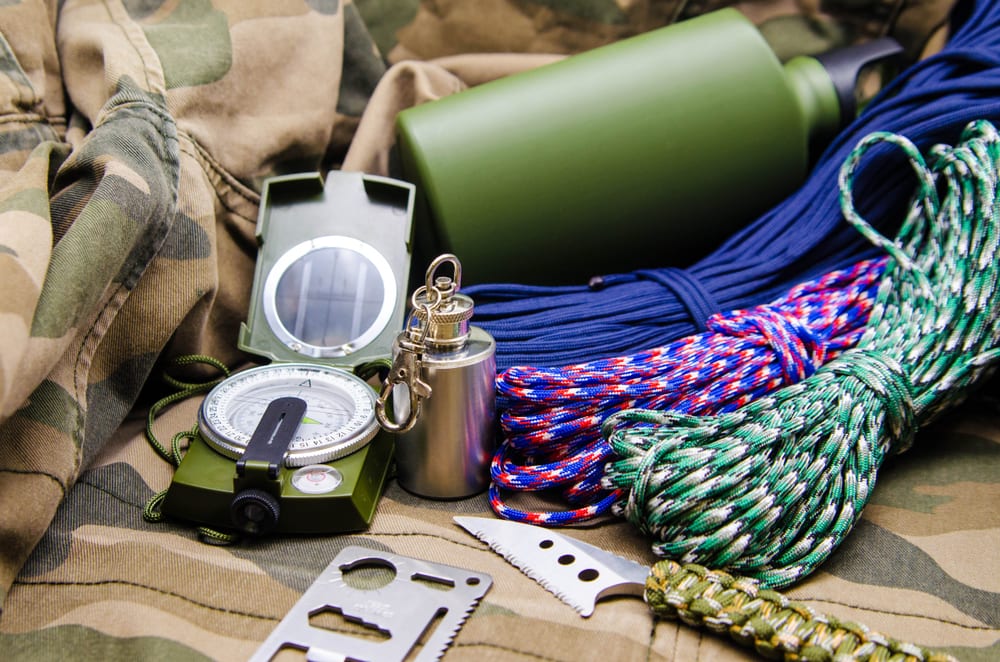
Paracord is a nylon rope made of several inner strands surrounded by a woven core. It was originally developed by the US military for use in parachutes during World War 2. As it is very strong and durable, it now has many uses in outdoor activities, camping, and sports.
Paracord is known as a kernmantle rope. Kernmantle ropes consist of a multi-stranded core and a woven nylon outer sheath. This makes them very strong, as they need to be to ensure a parachutist’s safety in the air.
Paracord was originally strictly for military use only. However, after World War II, paracord entered mainstream culture. It is especially popular in the world of camping and bushcraft.
Paracord has many uses and can be woven into an attractive bracelet or belt to be used when needed.
Find out more about paracord and how you can use it below.
What Does “550” Mean In Paracord?

When you see or hear the term “550 paracord”, it means that paracord has been strength tested to 550 lb (249 kg).
It will not break until under strain from more than this amount of weight. This makes 550 paracord the third-strongest paracord available. It is also known as Type 111 (3) paracord.
There are stronger paracords available, for instance, the “750” paracord and even the “1250” paracord.
You are more likely to see and use 550 paracord, however, as this size is more versatile. Paracord 550 is the most popular type of paracord. It’s known by the US military as MIL-C-5040H Type III paracord.
Paracord 550 has a diameter of 4mm. It has a core of 7 strands and an outer sheath made of 32 strands. It can be used to make horse tack, dog leads, survival bracelets, or even double up as an emergency mountaineering rope.
You can see the seven strands of inner nylon in the 550 paracord below.
What Is Paracord Made Of?

Paracords are most often made of nylon. However, you can get polyester paracord too. There are positives and negatives to using each material.
Because it is more flexible, crafters and knotters prefer nylon paracord. It is said to feel more “natural.” Although nylon is an artificially made material just like polyester,
Wallace Hume Carothers began producing nylon in 1935 for the DuPont Company. It was first used for stockings and toothbrushes.
In World War II, it became useful for replacing silk as a parachute material. It was used for both the chute and the cord. Before this, silk had been imported from Japan. That ended when America went to war with Japan.
Polyester was also developed by DuPont in the 1930’s, but at the time, nylon was more popular. A group of British chemists produced terylene from polyester in 1941. Polyesters are composed of long-chain polymers made up of at least 85% esters, dihydric alcohol, and terephthalic acid.
Types of Paracord

Apart from 550, there are several different grades of paracord. Here they are below.
- 90: Microparacord – 40kg (88 lb) / 1.18mm (0.046 in)
- 100: Type 1 – 45 kg (99 lb) / 1.6mm (0.06 in)
- 425: Type 2 – 181 kg (399 lb) / 3mm (0.12 in)
- 550: Type 3 – 249 kg (549 lb) / 4mm (0.16 in)
- 750: Type 4 – 340 kg (749 lb) / 4.5mm (0.18 in)
- 1250: Type 5 – 566 kg (1247 lb) / 6mm (0.24 in)
You will often see these labeled as “Type III” rather than “Type 3,” “Type IV” rather than “Type 4,” and so on. Here, Roman numerals stand in for actual digits.
You can also find special tinder paracords. This has undyed natural fiber strands inside instead of nylon. In an emergency, you can take your cord apart and use the dry inside strands as tinder.
Uses of Paracord

Paracord is a versatile and useful tool. Let’s take a look at some of the items you can make with paracord and some of the uses it can be put to.
- Fishing line: You can pull the paracord apart to expose the inner fibers. One of these is fine enough to be used as a fishing line.
- Survival bracelet: You can weave a survival bracelet out of paracord. This contains enough cord that you can unravel it if needed and use it to tie a shelter together, as a fishing line, or to tie up your kit. Plus much more.
- Shelter or tent support: You can hold a tent steady with paracord if your guy ropes get lost or fail. It’s ideal for tying wood together when you are building natural shelters.
- Sewing thread: if you unravel the paracord, you can use the inner strands to sew clothes or kits together.
- Dog and cat collars: You can weave these out of paracord, usually 550 paracord. You can also generate leads. They are hard-wearing and weather-resistant.
- Horse tack: Leading reins and horse head collars can be made from paracord.
- Bear hang: This is when you hang your food pack high in a tree to stop bears from getting to it. Paracord can hold a lot of weight, so it’s ideal for keeping your rations safe.
- Gardening: Paracord is great for tying trees and plants to stakes and making boundary markers or color-coded areas for different types of vegetables and fruit. As it doesn’t break down in the same way twine does, make sure you remove it as the plants grow.
- Nets, bags, and sacks: If you use net-making knots, you can make a very strong fishing net or bag. This does require a lot of paracord, but if you have that amount, it’s very useful for this.
- Heavy rope for tow lines and mooring boats: you can weave or knot several paracords together to make strong rope that can tow or anchor heavy vehicles. Use common sense. Never try to pull a heavy load, such as a vehicle, without knowing the breaking strain of the cord or rope.
- Tool handles: Paracord makes a good insulated cover for the handles of tools such as knives and axes. These keep your hands warm in cold weather and help prevent chafing.
That’s just a few of the uses for paracord. Some other less likely uses include handcuffs (if someone has broken the law and needs restraining). Another is replacing broken bra straps and shoe laces.
You may also like: How to Read a Compass: A Complete Compass Navigation Guide
Types of Paracord Knots
Knots are a complex subject with many books all to themselves, but here are a few you can use to create a paracord bracelet, belt, or necklace. Each knot creates a different style.
Cobra Knot
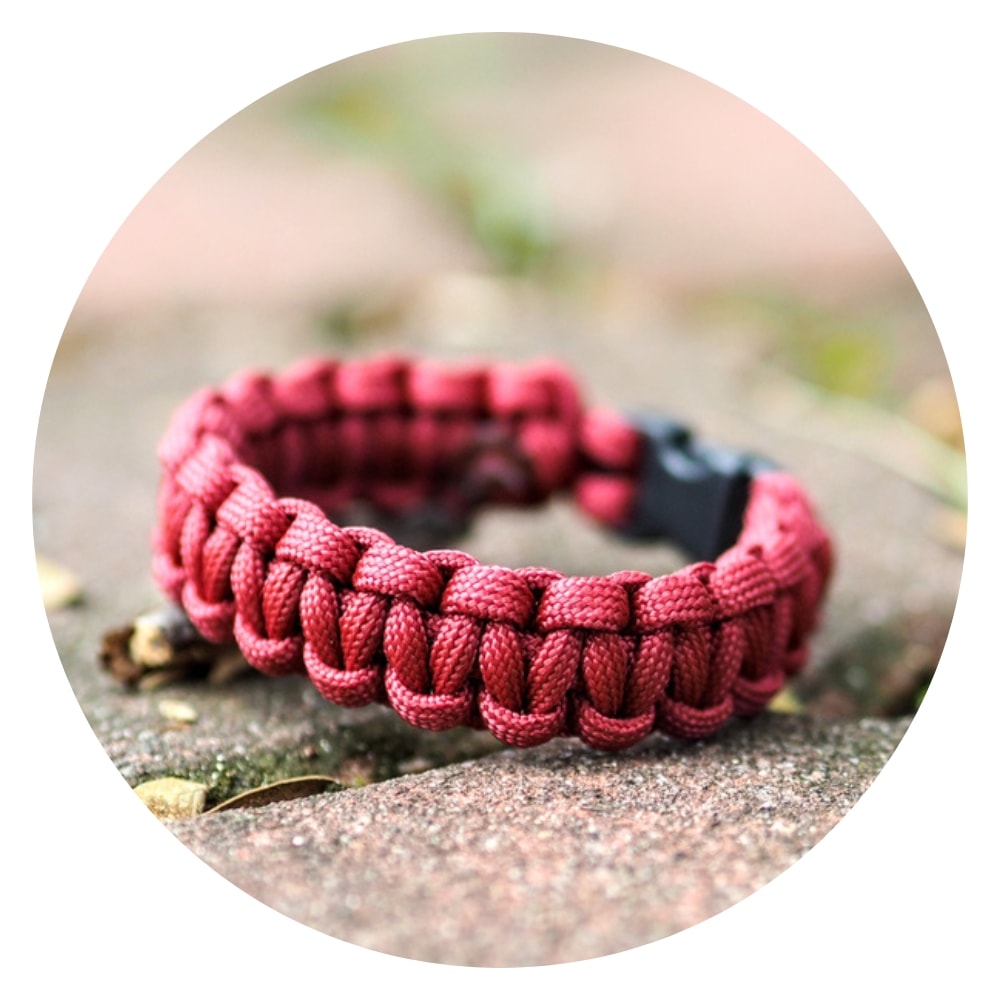
This looks great and is easier to tie when you use two colors. It is simple to learn and ideal for those starting out in paracord crafts.
Check out this tutorial here.
Fishtail

Here is a fishtail-weave paracord bracelet. It looks like a fish’s scales in a herringbone pattern.
Celtic Braid

This design uses three differently colored strands of paracord. Within the design are the simple looped knot, Celtic bar knot, 2-strand diamond knot, and square knot.
This is a more complex design, so you might want to practice with more basic designs involving one or two knots first.
Snake Knot
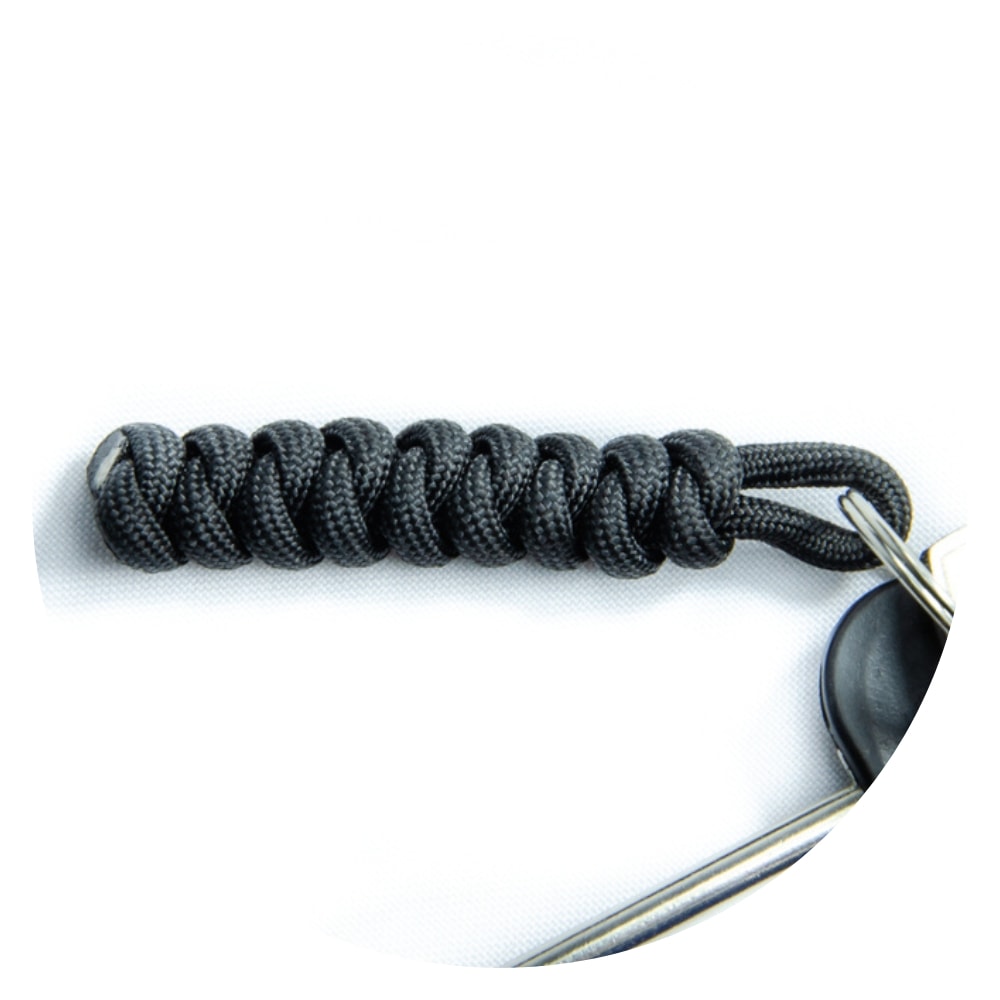
This is mentioned above in the section on net making, but this is the original version of a snake knot. It is for making bracelets or belts, not a net.
Scaffold Knot
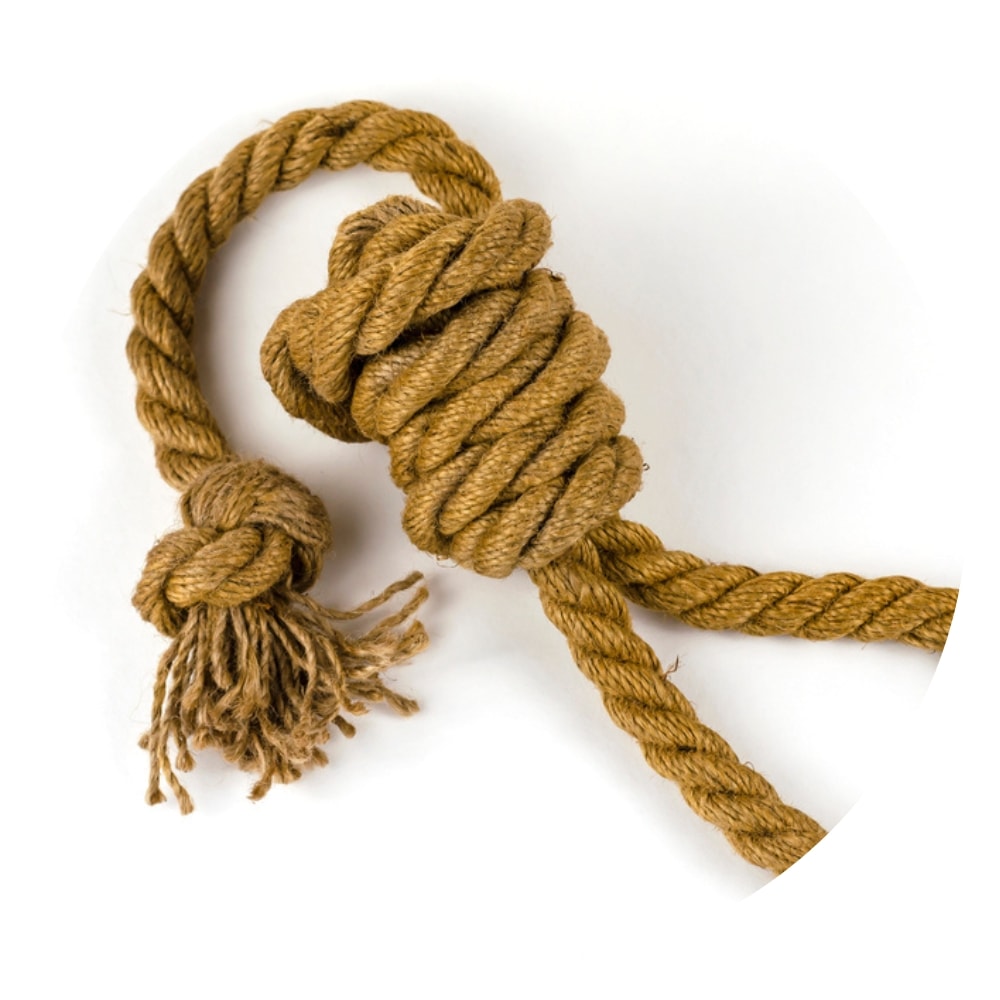
This easy knot is good for finishing off the ends of bracelets and other paracord crafts. Simply make a loop, wrap one cord around the base of the loop three times, then pull the end of the looped cord through the three loops and tighten. It should look like a hangman’s noose.
Diamond Knot
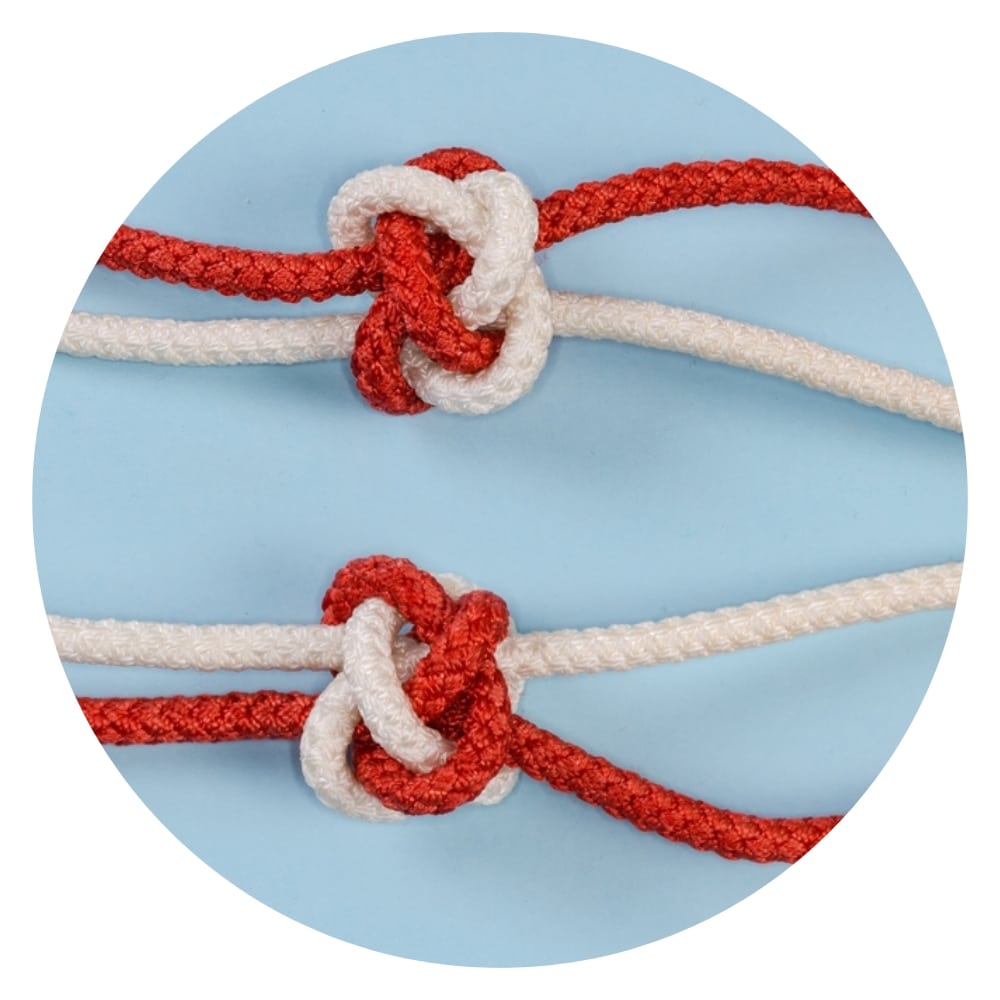
This knot is used to finish off the ends of paracord crafts like bracelets. This is the “two-strand diamond knot”. Below are two diamond knots in some decorative ropework.
You may also like: 25 Types Of Knots: Essential Skills For Any Adventure
Fun Facts about Paracord

You may also like: Get To Know Your 20 Types Of Lighters
Paracord FAQs

How long is a roll of paracord?
Paracord spools are most often 100 feet (30 meters) in length when unrolled. You can also get 50-foot (15-meter) and 200-foot (60-meter) or even 3000-foot (914-meter) lengths of paracord on a spool.
Which is better, nylon or polyester paracord?
Both nylon and polyester paracord have advantages and disadvantages. Crafters prefer to use nylon, as it stretches more and has richer colors. The colors are longer-lasting on polyester paracord, and polyester performs better when wet. Polyester is cheaper than nylon.
Is paracord waterproof?
Paracord is waterproof, but it will shrink the first time it is submerged in water or washed in the laundry. If you are going to use it for crafting, wash it first so it doesn’t shrink any more when you craft with it.
Is paracord flammable?
Paracord is not especially flammable, but if held in a flame for long enough, it will catch fire. When this happens, it releases foul-smelling fumes, which are not good for your health. You can buy special paracord with intentionally flammable inner strands. This doubles as an emergency flashlight.
How do I attach two or more colors or lengths of paracord together?
You can fuse the paracord together with a lighter. This isn’t quite the same as burning it; you just want to heat it enough so that the nylon melts, not burns. This is ok for weaving a bracelet, but to make it stronger, you can splice the two ends together for more strength.







